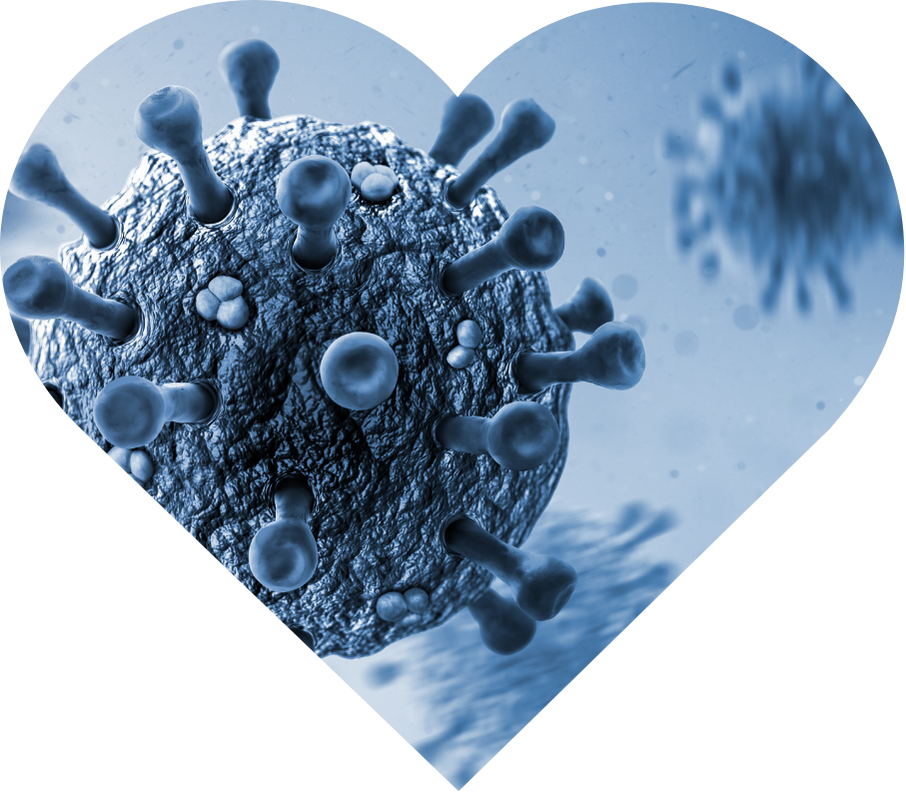In 1854, when the British nurse Florence Nightingale enforced hygiene rules in hospitals during the Crimean War, mortality rates dropped dramatically due to simple actions like handwashing, ventilation, maintaining distance, and ensuring order. Women like Nightingale thus laid the foundation for modern infection prevention. Today, in the midst of winter, this principle is more relevant than ever: Small, consistent hygiene steps can noticeably change the course of diseases – and improve your performance.
Influenza viruses are primarily transmitted through droplets and aerosols: tiny particles produced when speaking, coughing, or sneezing. Droplets fall quickly to the ground, while aerosols remain airborne longer. Aerosolsvery small, airborne particles produced when breathing and speaking spread particularly in poorly ventilated rooms. Exposure timeduration of exposure to infectious particles and Viral loadamount of virus that is taken in determine whether an infection occurs. Protection is therefore achieved through three levers: controlling the source (wearing a mask when you are sick), interrupting the transmission route (ventilation, maintaining distance), and strengthening the recipient (immunocompetence, vaccination). For individuals who aim for high performance, this means not only avoiding infections but also minimizing cognitive dips, training interruptions, and productivity losses.
Even mild respiratory infections can reduce sleep quality, cognitive flexibility, and training adaptation – effects that often last for days beyond the end of symptoms. Studies show that wearing masks in public spaces significantly reduces respiratory symptoms [1]; medical masks reduce infections compared to wearing no mask [2]. Social distancing flattens infection waves and reduces individual exposure [3]. Insufficient ventilation increases the risk of acute respiratory infections, while maintaining an optimal relative humidity of 40-60% stabilizes mucosal barriers and reduces viral viability [4], and improved building ventilation correlates with fewer transmissions in real-life settings [5]. Concurrently, annual influenza vaccination reduces complications, especially in at-risk groups, and stabilizes community immunity [6]. For personal performance, these measures mean fewer illness-related absences, more stable training cycles, and clearer thinking throughout the winter season.
A large pragmatic randomized controlled trial from Norway examined the wearing of surgical masks in public for 14 days and found a significant reduction in self-reported respiratory symptoms compared to not wearing a mask – practical evidence that masks have noticeable effects in community settings [1]. Additionally, systematic reviews and meta-analyses show that medical masks reduce the risk of infection compared to wearing no mask; respiratory protective masks such as fit-tested N95/FFP2 typically provide stronger protection, while simple cloth masks may even be disadvantageous in some RCTs – indicating the importance of quality and fit as critical factors [2]. Regarding indoor air quality, epidemiological and experimental studies demonstrate that moderate temperatures and relative humidity of 40-60% support mucosal function and lower the transmissibility of influenza viruses; real-world cohort data from residential settings further show reduced likelihood of transmissions in better-ventilated buildings, supporting the link between ventilation, aerosol dilution, and infection risk [4] [5]. Finally, public health analyses on influenza emphasize that annual vaccination – particularly among the elderly and at-risk groups – remains the most effective single measure against severe cases and can reduce societal peak burdens through higher vaccination rates [6].
- In crowded indoor spaces: wear a medical mask or FFP2; avoid cloth masks. Fit check: ensure the mask is snug-fitting with no gaps at the nose and cheeks. Effect: measurably reduced respiratory symptoms in everyday life [1], general protection through medical masks in RCTs [2], consistent evidence base from systematic analyses [7].
- Distance as a reflex: keep 1-2 meters away from individuals who are coughing or sneezing; choose side rather than frontal waiting zones. Outcome: lower exposure and slowed spread during pandemics – also relevant for healthy individuals [3].
- Optimize indoor air: aim for 40-60% relative humidity, 22-24 °C, and CO2 levels below 800-1000 ppm (as a proxy for ventilation). Perform thorough ventilation every 20-30 minutes or use mobile air purifiers. Better air quality lowers infection risk and maintains cognitive performance [4]; higher ventilation rates correlate with fewer transmissions in residential settings [5].
- Train yourself to avoid touching your face: break the habit loop – use glasses as a barrier, tissues instead of fingers, or a reminder on your screen edge. Background: individuals touch their faces an average of 22 times per hour, men more frequently – an underestimated infection pathway [8].
- Schedule vaccination: plan for flu vaccination by mid-autumn at the latest; take advantage of workplace vaccination offers. Effect: lower morbidity and mortality in at-risk groups, strengthening of community immunity [6].
- Balance the immune system: aim for 7-9 hours of sleep, follow a Mediterranean diet with adequate protein and polyphenols, and engage in daily exercise. Train "moderately most, intensely dosed": 150-300 minutes of moderate activity per week, with high-intensity sessions sparingly, especially during infection phases. Justification: moderate activity strengthens the immune response; overtraining can reduce NK cells and IgA, increasing infection susceptibility [9] [10].
In the coming winters, we will likely gather better data on mask types, fit, and practical usability, as well as on "health-based ventilation" in offices and home settings. Studies are expected to link CO2, humidity, and ventilation targets with actual transmission rates and offer more precise recommendations on training load and immune competence during the cold season – making prevention even more individualized and effective.
This health article was created with AI support and is intended to help people access current scientific health knowledge. It contributes to the democratization of science – however, it does not replace professional medical advice and may present individual details in a simplified or slightly inaccurate manner due to AI-generated content. HEARTPORT and its affiliates assume no liability for the accuracy, completeness, or applicability of the information provided.













